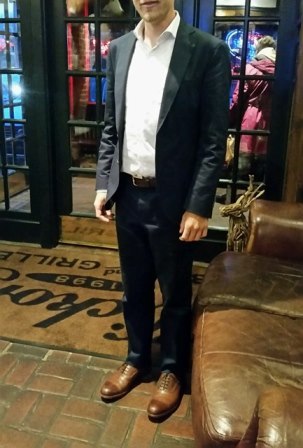When I was at the TED Conference this year in Vancouver, I had a lot of big picture conversations about how best to solve the kidney donor shortage. People suggested that we try to help the 100,000 people now waiting for a kidney in the U.S. get one sooner through: (1) impassioned storytelling about the cause, (2) 3-D printing kidneys, (3) growing or preserving more organs efficiently, (4) technology breakthroughs, and even (5) paying people to donate. I talked to television powerhouse Shonda Rhimes in a dance club with electric pink lighting about how her television show, Grey's Anatomy, was helping people nationally learn about transplant. A technology pioneer from the World Economic Forum said I should host a hackathon to bring the national experts with different expertise together to create a strategic plan. I left challenged, inspired, and ready to get back to work at UCLA.
But there also were small picture conversations I had privately.
"You work in kidney donation?" Andrew, a storyteller I meet in the virtual reality line, gasped, waving over his partner, Jeff, to listen. "Our assistant is on dialysis and needs a kidney. Can you help him get a transplant?"
"My brother's kidneys are failing and I am considering donating to him," said another TED attendee, a pediatrician. "Can you bring me some literature?"
One CEO said, "My doctor has been on dialysis for years. He looks terrible." "Have you considered donating to him?" I ask. "I have not," he said, sounding a little surprised.
After TED I send out videos and print education by mail. The post-TED emails continue. "I want to learn more about the risks involved with being a living donor," says a fourth TED attendee, asking for the most up-to-date research articles to ensure that he knows all the fine print before he offers to become an altruistic donor to a fellow church member. "My kidneys are my wife's kidneys, too," he says, not wanting to do anything unless they are both in full agreement.
Back in Los Angeles, one Friday, I head over to Andrew and Jeff's house to meet their assistant, Chris, a 25-year old rangy writer with a large port in his arm to help his blood exit and reenter his body during dialysis three times a week. I don't know what I can do for Chris, but listening is never wrong. I ask him the questions that all medical professionals would ask. He shares about his first living donor transplant from his dad, which lasted three years. He seems frustrated but still committed. "I am getting evaluated for a second transplant in a few weeks," he says. "My mom wants me to do it in the Midwest so she can take care of me."
Turning into a bossy older sister, I say, "Let's collect everything you need so your evaluation appointment can go really well." Chris makes a list on his computer and over the next week tracks down letters of support to show the transplant center that he has steady employment and that he has been adherent to his dialysis treatment. I add a letter to the packet from myself, advocating for him personally.
Andrew and Jeff offer to take him shopping for clothes to wear when he goes to meet the staff at the transplant center, which Chris now calls, "the job interview." I coach them to buy something that shows respect and that Chris is an adult, well able to manage his disease. I think that they would come back with a button-down white shirt, but we live in Los Angeles. They return with new socks, underwear, and a suit bag from Hugo Boss. "Now, he will look, head to toe, like a million bucks," Jeff explains.
A few weeks later, Chris texts me to say that he is heading into his evaluation appointment. I wish him luck and add, "Send me a picture of you in the suit." The picture that comes back is of a blond, young man in a lean black suit, standing straight and smiling. Afterwards, he tells me that it went really smoothly and to keep my fingers crossed. I tell him that, this time, we want to do everything we can to make the transplant last for years and years. He agrees.
A month later, Jeff texts me to ask if I had heard from Chris because he had missed work. The next day, we find out that Chris has died quietly and unexpectedly at home. Dialysis and life without functioning kidneys was too hard on his body. We also learn that his sister had just found out that she could donate her kidney to him.
I look back at the picture of the beautiful man in the Hugo Boss suit on my phone. He was making his way in Los Angeles, working hard to be more than his disease. He was writing a television pilot. He had people in his life that were rooting for him. When I last saw him, he hugged me, telling me that I brought him hope that he could do this again. I said it was an honor and that, when he had his transplant, he could pay it forward.
Every year, 7000-8000 people die or are removed from the kidney waiting list because they are too sick to be eligible for a transplant anymore or because they die. There are just not enough kidneys available for all of the people who need them. And sick people run out of time. A living donor transplant was so close for Chris. Just not close enough.
The Facts: On average, 22 people die a day, waiting for a transplant. Over 100,000 people are waiting for a kidney transplant today. Generous people can donate a kidney while they are alive as a living donor. Learn more at www.exploretransplant.org or www.unos.org.
